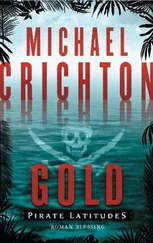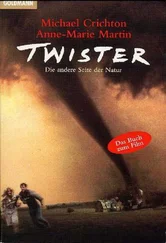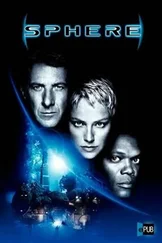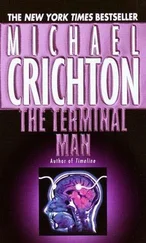Michael Crichton - Airframe
Здесь есть возможность читать онлайн «Michael Crichton - Airframe» весь текст электронной книги совершенно бесплатно (целиком полную версию без сокращений). В некоторых случаях можно слушать аудио, скачать через торрент в формате fb2 и присутствует краткое содержание. Жанр: Детская проза, на английском языке. Описание произведения, (предисловие) а так же отзывы посетителей доступны на портале библиотеки ЛибКат.
- Название:Airframe
- Автор:
- Жанр:
- Год:неизвестен
- ISBN:нет данных
- Рейтинг книги:3 / 5. Голосов: 1
-
Избранное:Добавить в избранное
- Отзывы:
-
Ваша оценка:
- 60
- 1
- 2
- 3
- 4
- 5
Airframe: краткое содержание, описание и аннотация
Предлагаем к чтению аннотацию, описание, краткое содержание или предисловие (зависит от того, что написал сам автор книги «Airframe»). Если вы не нашли необходимую информацию о книге — напишите в комментариях, мы постараемся отыскать её.
Airframe — читать онлайн бесплатно полную книгу (весь текст) целиком
Ниже представлен текст книги, разбитый по страницам. Система сохранения места последней прочитанной страницы, позволяет с удобством читать онлайн бесплатно книгу «Airframe», без необходимости каждый раз заново искать на чём Вы остановились. Поставьте закладку, и сможете в любой момент перейти на страницу, на которой закончили чтение.
Интервал:
Закладка:
"Don't let me keep you," Marder said. "I need answers." He held up the JAA fax. "This is the tip of the iceberg, people. I don't have to remind you what happened to the DC-10. Most advanced aircraft of its time, a marvel of engineering. But it had a couple of incidents, and some bad visuals, and bang- the DC-10's history. History. So get me those answers!"
NORTON AIRCRAFT
9:31 a.m.
Walking across the plant toward Hangar 5, Richman said, "Marder seemed pretty worked up, didn't he? Does he believe all that?"
"About the DC-10? Yes. One crash finished the aircraft."
"What crash?"
"It was an American Airlines flight from Chicago to LA," Casey said. "May, 1979. Nice day, good weather. Right after takeoff the left engine fell off the wing. The plane stalled and crashed next to the airport, killing everybody on board. Very dramatic, it was all over in thirty seconds. A couple of people taped the flight, so the networks had film at eleven. The media went crazy, called the plane a winged coffin. Travel agents were flooded with calls canceling DC-10 bookings. Douglas never sold another one of them."
"Why did the engine fall off?"
"Bad maintenance," Casey said. "American hadn't followed Douglas's instructions on how to remove the engines from the plane. Douglas told them to first remove the engine, and then the pylon that holds the engine to the wing. But to save time, American took the whole engine-pylon assembly off at once. That's seven tons of metal on a forklift. One fork-lift ran out of gas during the removal, and cracked the pylon. But the crack wasn't noticed, and eventually the engine fell off the wing. So it was all because of maintenance."
"Maybe so," Richman said, "but isn't an airplane still supposed to fly, even missing an engine?"
"Yes, it is," Casey said. "The DC-10 was built to survive that kind of failure. The plane was perfectly airworthy. If the pilot had maintained airspeed, he'd have been fine. He could have landed the plane."
"Why didn't he?"
"Because, as usual, there was an event cascade leading to the final accident," Casey said. "In this case, electrical power to the captain's cockpit controls came from the left engine. When the left engine fell off, the captain's instruments were shut off, including the cockpit stall warning and the backup warning, called a stick shaker. That's a device that shakes the stick to tell the pilot the plane is about to stall. The first officer still had power and instruments, so the first officer's chair didn't have a stick shaker. It's a customer option for the first officer, and American hadn't ordered it. And Douglas hadn't built any redundancy into their cockpit-stall warning system. So when the DC-10 began to stall, the first officer didn't realize he had to increase throttle."
"Okay," Richman said, "but the captain shouldn't have lost his power in the first place."
"No, that was a designed-in safety feature," Casey said. "Douglas had designed and built the aircraft to survive those failures. When the left engine tore off, the aircraft deliberately shut down the captain's power line, to prevent further shorts in the system. Remember, all aircraft systems are redundant. If one fails, the backup kicks in. And it was easy to get the captain's instrumentation back again; all the flight engineer had to do was trip a relay, or turn on emergency power. But he didn't do either one."
"Why not?'
"No one knows," Casey said. "And the first officer, lacking the necessary information on his display, intentionally reduced his airspeed, which caused the plane to stall and crash."
They were silent for a moment, walking.
"Consider all the ways this might have been avoided," Casey said. "The maintenance crews could have checked the pylons for structural damage after servicing them improperly. But they didn't. Continental had already cracked two pylons using forklifts, and they could have told American the procedure was dangerous. But they didn't. Douglas had told American about Continental's problems, but American didn't pay any attention."
Richman was shaking his head.
"And after the accident, Douglas couldn't say it was a maintenance problem, because American was a valued customer. So Douglas wasn't going to put the story out. In all these incidents, it's always the same story-the story never gets out unless the media digs it out. But the story's complicated, and that's difficult for television… so they just run the tape. The tape of the accident which shows the left engine falling off, the plane veering left, and crashing. The visual implies the aircraft was poorly designed, that Douglas hadn't anticipated a pylon failure and hadn't built the plane to survive it. Which was completely inaccurate. But Douglas never sold another DC-10."
"Well," Richman said. "I don't think you can blame the media for that. They don't make the news. They just report it."
"That's my point," Casey said. "They didn't report it, they just ran the film. The Chicago crash was a kind of turning point in our industry. The first time a good aircraft was destroyed by bad press. The coup de grace was the NTSB report. It came out on December 21. Nobody paid any attention.
"So now, when Boeing introduces their new 777, they arrange a complete press campaign to coincide with the launch. They allow a TV company to film the years of development, and at the end there's a six-part show on public television. There's a book to go with it. They've done everything they can think of to create a good image for the plane in advance. Because the stakes are too high."
Richman walked along beside her. "I can't believe the media has that much power," he said.
Casey shook her head. "Marder is right to be worried," she said. "If anybody in the media gets onto Flight 545, then the N-22 will have had two incidents in two days. And we're in big trouble."
NEWSLINE /NEW YORK
1:54 p.m.
In midtown Manhattan, in the twenty-third-floor offices of the weekly news show Newsline, Jennifer Malone was in the editing bay, reviewing tape of an interview with Charles Manson. Her assistant Deborah walked in, dropped a fax on her desk, and said casually, "Pacino dumped."
Jennifer hit her pause button. "What?"
"Al Pacino just dumped."
"When?"
'Ten minutes ago. Blew Marty off, and walked."
"What? We shot four days of B-roll on the set in Tangier. His picture opens this weekend-and he's slated for the full twelve." A twelve minute segment on Newsline, the most-watched news show on television, was the kind of publicity that money couldn't buy. Every star in Hollywood wanted on the show. "What happened?"
"Marty was chatting with him during makeup, and mentioned that Pacino hadn't had a hit in four years. And I guess he got offended, and walked."
"On camera?"
"No. Before."
"Jesus," Jennifer said. "Pacino can't do that. His contract calls for him to do publicity. This was set up months ago."
"Yeah, well. He did."
"What's Marty say?"
"Marty is pissed. Marty is saying, What did he expect, this is a news show, we ask hard-hitting questions. You know, typical Marty."
Jennifer swore. "This was just what everyone was worried about."
Marty Reardon was a notoriously abrasive interviewer. Although he had left the news division to work on Newsline - at a much higher salary-two years before, he still viewed himself as a hard-hitting newsman, tough but fair, no-holds-barred-though in practice he liked to embarrass interviewees, putting them on the spot with intensely personal questions, even if the questions weren't relevant to the story. Nobody wanted to use Marty on the Pacino shoot, because he didn't like celebrities, and didn't like doing "puff pieces." But Frances, who usually did the celeb pieces, was in Tokyo interviewing the princess.
Читать дальшеИнтервал:
Закладка:
Похожие книги на «Airframe»
Представляем Вашему вниманию похожие книги на «Airframe» списком для выбора. Мы отобрали схожую по названию и смыслу литературу в надежде предоставить читателям больше вариантов отыскать новые, интересные, ещё непрочитанные произведения.
Обсуждение, отзывы о книге «Airframe» и просто собственные мнения читателей. Оставьте ваши комментарии, напишите, что Вы думаете о произведении, его смысле или главных героях. Укажите что конкретно понравилось, а что нет, и почему Вы так считаете.








